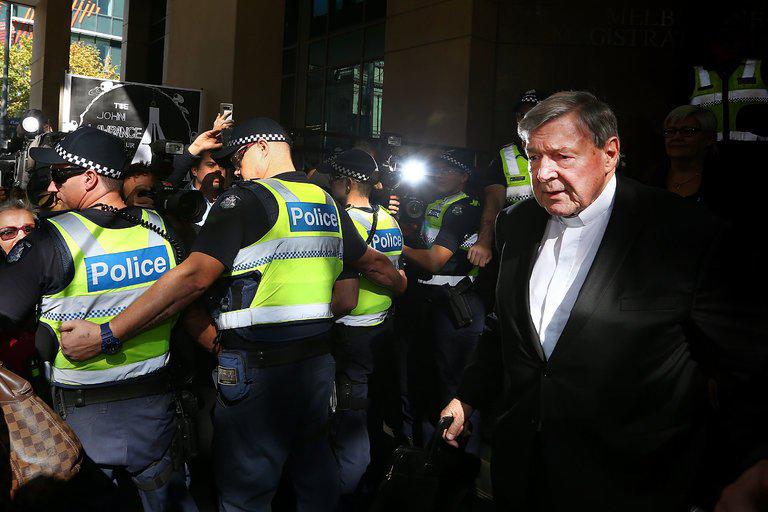|
Why the Cardinal Pell Case Has Been So Secretive
By Damien Cave And Adam Baidawi
Cardinal George Pell, the Vatican’s third-highest-ranking official, will stand trial on several charges of sexual abuse from multiple complainants, an Australian court ruled on Tuesday. The slow-moving case — charges were filed in June — has been a test of both Australia’s justice system and the Vatican’s efforts to hold clerics accountable after decades of abuse scandals. It is occurring in a country where where defamation law favors plaintiffs, where criminal law protects defendants more than it does in many other countries, and where a number of legal standards restrict reporters’ ability to publish information related to criminal cases. Here’s a guide to why many of the details of Cardinal Pell’s case may remain obscured, and to what we know about the cardinal and the case so far. Why can’t the public know more?Australian criminal law tends to be more favorable to defendants, and its proceedings more secretive, than in the United States. The country’s contempt standards prohibit reporting — after charges have been filed, and before a verdict has been reached — that might be seen as prejudicial against, or for, a defendant. Depending on the type of offense, journalists cannot publish information in a wide range of categories, including specific accusations against an individual; any prior convictions the person may have, or affiliations with convicted criminals; and material that might be deemed unreasonably favorable to a defendant’s case. All news organizations in Australia are subject to these restrictions, which creates the potential for vast differences between articles about a case published from inside Australia and the work of organizations based elsewhere. In many cases, suppression orders are used to further restrict what journalists can report in Australia, placing certain details that appear in court records off limits. In rare cases, even reporting the existence of a suppression order can be forbidden, meaning that journalists cannot tell readers precisely why certain details are missing from their coverage. These are sometimes referred to as superinjunctions. “Quite often, orders will be made to protect the fairness of the defendant’s trial,” said Jason Bosland, a law professor at the University of Melbourne, whose research has focused on court proceedings. “That’s the main purpose of an order.” But, he added, such orders are often approved without a rigorous determination of whether they are in fact necessary. In a report published before Cardinal Pell’s case began, Mr. Bosland wrote: “Open justice is increasingly being undermined in Victoria due to the inappropriate use of suppression orders by the courts.” Melbourne is in the state of Victoria. In an interview, Mr. Bosland added: “The problem in Australia is that the courts tend to make orders that don’t comply with the strict requirements of the law.” Who is Cardinal George Pell?The son of a Catholic mother and an Anglican father, George Pell grew up in Ballarat, a mining town northwest of Melbourne, where he also served as a priest from 1971 to 1984. During that time, accusations of abuse by priests swirled through the area, but Cardinal Pell later said that he had no memory of hearing about specific substantiated cases of sexual abuse. His rise through the church was swift. He became bishop of Melbourne in 1996. Less than a year later, he formed the “Melbourne Response,” a process to investigate local accusations of sexual abuse against Catholic clergymen. More than a dozen priests accused of abuse stepped down during Cardinal Pell’s time in Melbourne, but he also protected the church’s finances. The Melbourne Response capped payouts to victims at 50,000 Australian dollars ($38,000), far below what victims in other countries would later receive. In 2007, he was appointed to a council of cardinals assigned to improve the Vatican’s finances. In 2014, Pope Francis named him prefect of the Secretariat for the Economy, effectively making him the Vatican’s treasurer and its third most senior figure. Last June, his legal team received the charges against him in the state of Victoria. Pope Francis gave him a leave of absence to return to Australia to mount his defense. What has he been accused of?Cardinal Pell has been charged with “historical sexual offenses.” No further details of those charges have been publicly released by the courts. Cardinal Pell previously denied knowing about abuse in the 1970s and ’80s, but the description of the crimes that have been made available to the public would suggest that he is now being accused of having been personally engaged in sexual offenses by multiple complainants. Of the various charges, about half of which will move to trial, most appear to be linked to two locations where the alleged offenses took place, spanning many years. But the vast majority of charges against the Cardinal were either withdrawn or dismissed, including several of the most serious allegations, which were said to have taken place in a playground, on an altar, on a mountain top, and during a 1970s screening of “Close Encounters of the Third Kind.” What’s also known is that Cardinal Pell is the highest-ranking Vatican cleric to face charges of sexual crimes, and that he has aggressively denied the charges. “The whole idea of sexual abuse is abhorrent to me,” he said at a news conference in Rome last June.
|
.
Any original material on these pages is copyright © BishopAccountability.org 2004. Reproduce freely with attribution.
